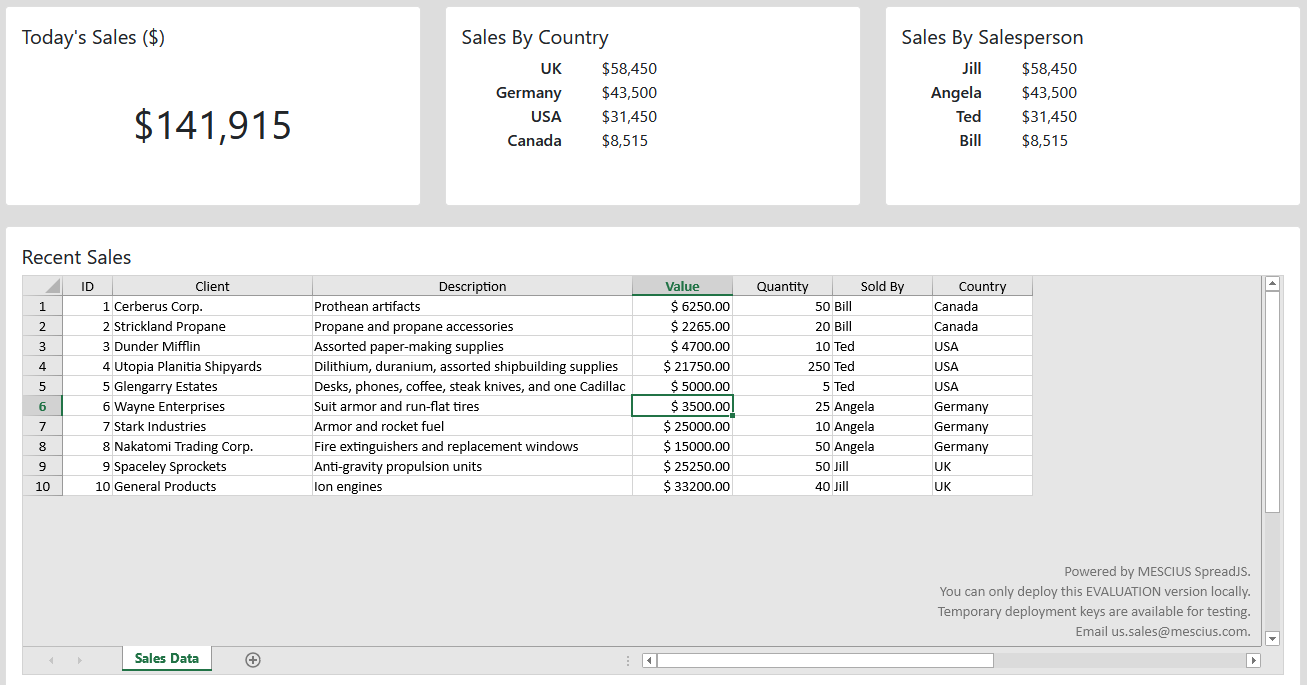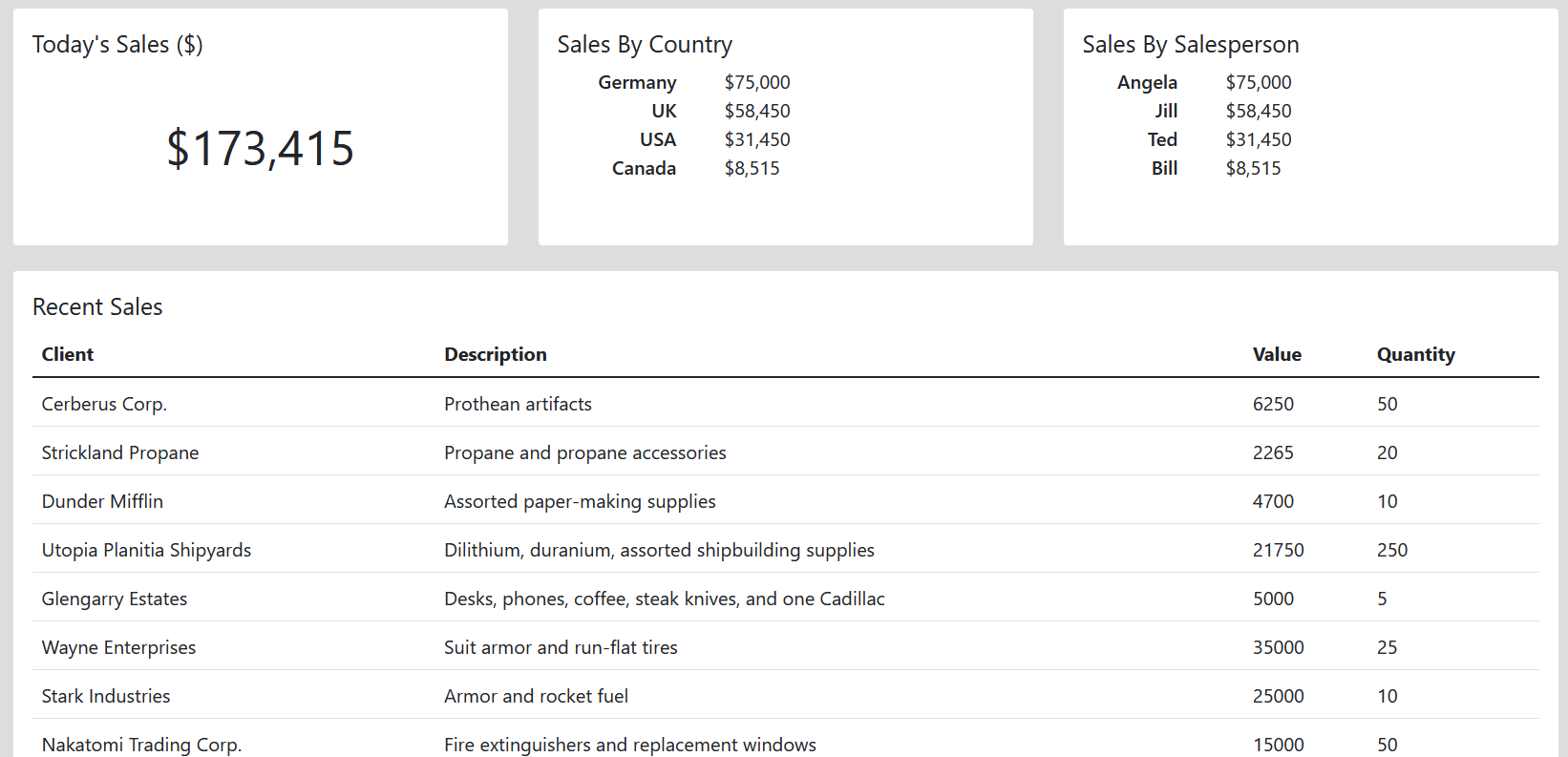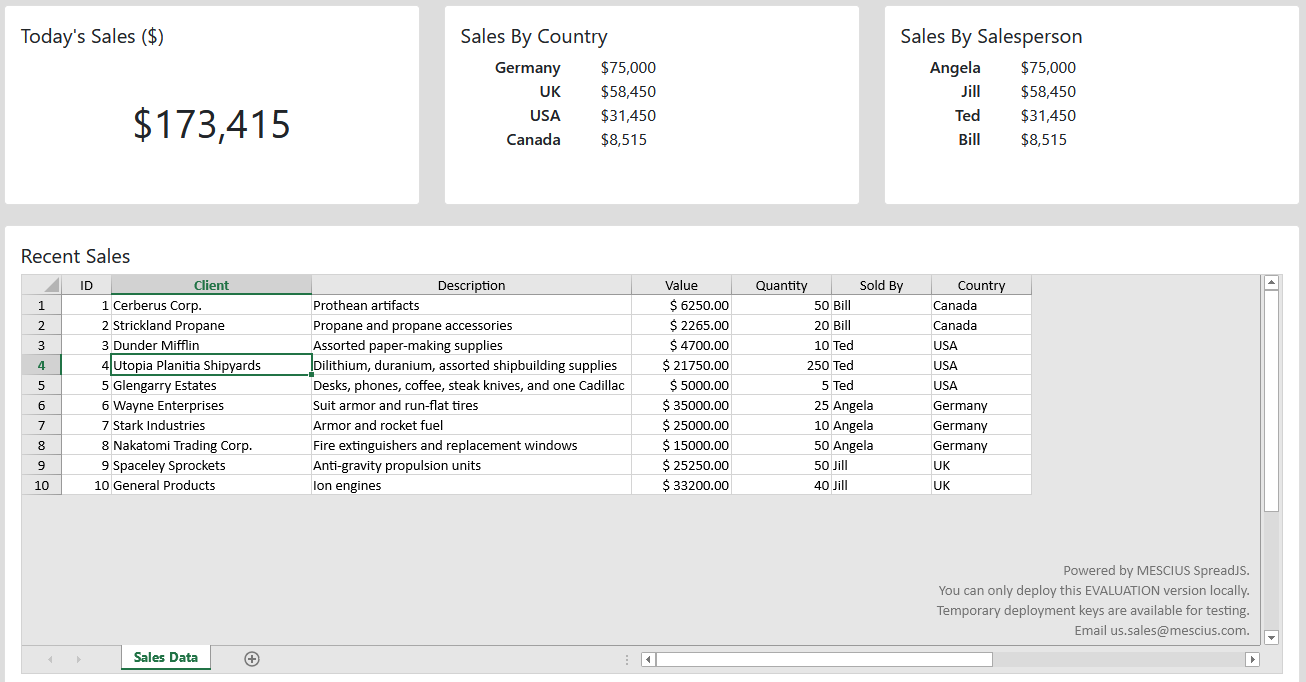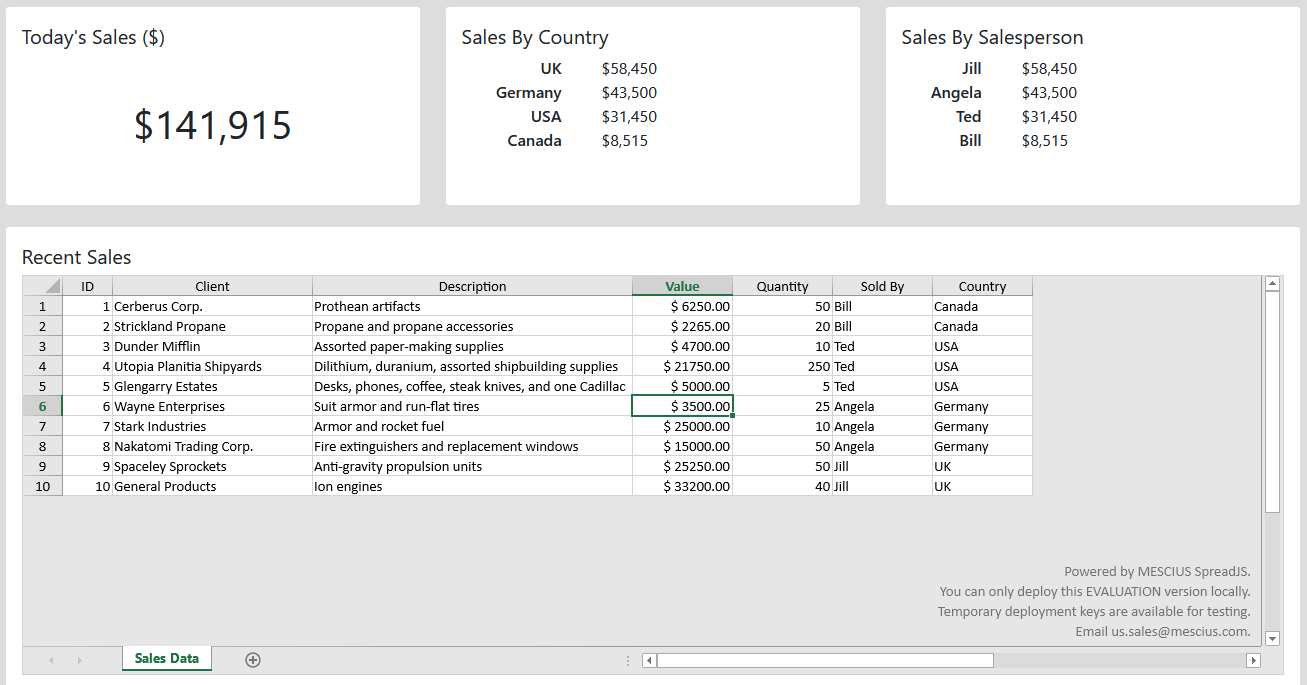
2024-6-27 05:48:59 Author: hackernoon.com(查看原文) 阅读量:6 收藏
“It looks great, but could you just add Excel import?”
If you’ve developed software for a long time, you’ve probably heard that question from a manager more than once. To a non-technical crowd, asking for Excel import/export doesn’t sound like a big deal. How hard could it be, right?
But all too often, this question strikes fear into the hearts of developers. On most platforms, working with Excel files requires a lot of work. Historically, this has been doubly true on the web. Working with Excel data in a web app has felt a bit like this xkcd comic: "It can be hard to explain the difference between the easy and the virtually impossible." Building your own in-browser spreadsheet with Excel import and Excel export feels like a problem that will take five years and a research team to solve.
That’s changing. We now have turnkey libraries that let you drop a fully functioning spreadsheet into your web app. SpreadJS is one of them. We’ll look at how to take an existing Vue app – a real-world app using a Vuex store – and enhance it using SpreadJS.
The rest of the article assumes that you already understand HTML, CSS, and JavaScript. It also assumes you have a working knowledge of the Vue.js progressive JavaScript framework for creating web UI. It will help if you’ve used Vuex for state management, but don’t worry if you haven’t. It’s intuitive and easy to understand, and you’ll be able to figure out what’s going on just by reading the code if you’ve used Vue.
In this blog, we will cover how to add Excel Import and Export to your Vue App following these steps:
- Vue Application Structure
- Add SpreadJS to Your Vue App
- Add Excel Export
- Add Excel Import
- Test Your Vue App
The Vue App
The Vue app we’ll be working on is a straightforward sales dashboard with a few summary panels and a table of data. It’s the kind of app that falls into the “not bad” category:

Although it’s just a demo, it’s exactly the kind of app that enterprise web developers have to create. It’s also exactly the kind of app that we’re typically asked to add Excel functionality to, so it will be a perfect example for the rest of this article.
The code for this application can be found here.
If you want to see how to create a Vue application from scratch, check out this quick start guide.
To set the stage, the dashboard is a single-page application made with Vue. It uses the latest and greatest Vue best practices: single-file components and a Vuex data store. It’s also using Bootstrap for its CSS components and grid system.
Bootstrap isn’t as popular as it used to be, but in reality, Bootstrap is still everywhere – especially in enterprise web apps where Excel support is usually needed. We’d wager that plenty of new enterprise web apps will still use Bootstrap in 2030.
If you’d rather use Bulma or Tachyons in your spreadsheet-enabled apps, go right ahead! SpreadJS will work well with either of them.
Vue Application Structure
Let’s take a look at how the code is structured. Our Vuex store and Vue application are both defined in main.js. We have several single-file Vue components, all located in the components folder.
If you look at our Vuex store, you’ll see the following:
const store = new Vuex.Store({
state: {
recentSales
}
mutations: {
UPDATE_RECENT_SALES(state) {
state.recentSales.push([]);
state.recentSales.pop();
}
}
});
Our store’s initial state is set to the value of recentSales, a set of dummy data we imported. We also have a function that handles updating the recent sales when they are changed.
Wait a minute. If we’ve only got one set of data, how are we generating three charts and a table? To see what’s happening, open up the Dashboard.vue component. In it, you’ll see several computed properties are being generated based on the data in the Vuex store:
<template>
<div style="background-color: #ddd">
<NavBar title="Awesome Dashboard"/>
<div class="container">
<div class="row">
<TotalSales :total="totalSales"/>
<SalesByCountry :salesData="countrySales"/>
<SalesByPerson :salesData="personSales"/>
<SalesTable :tableData="salesTableData"/>
</div>
</div>
</div>
</template>
<script>
import NavBar from "./NavBar";
import TotalSales from "./TotalSales";
import SalesByCountry from "./SalesByCountry";
import SalesByPerson from "./SalesByPerson";
import SalesTable from "./SalesTable";
import { groupBySum } from "../util/util";
export default {
components: { NavBar, SalesByCountry, SalesByPerson, SalesTable, TotalSales },
computed: {
totalSales() {
const items = this.$store.state.recentSales;
const total = items.reduce((acc, sale) => (acc += sale.value), 0);
return parseInt(total);
},
chartData() {
const items = this.$store.state.recentSales;
const groups = groupBySum(items, "country", "value");
return groups;
},
personSales() {
const items = this.$store.state.recentSales;
const groups = groupBySum(items, "soldBy", "value");
return groups;
},
salesTableData() {
return this.$store.state.recentSales;
},
}
};
</script>
Now, it makes more sense! The single data set contains everything we need to generate all of the numbers and tables for our dashboard. Since the data is in a reactive Vuex store, if the data updates, then all of the dashboard panels will update automatically.
This reactivity will come in handy in the next section when we replace our boring old static table with an editable spreadsheet.
Adding SpreadJS to Your Vue App
Here’s where the fun starts! We have our dashboard, but we want to eliminate that clunky old HTML table. So, we’ll have to change things up a little bit. We have a great starting point, but we must run our app locally to use SpreadJS in development mode without a license.
You can download the finished code to see the final result.
Start by opening the original project without SpreadJS. Open a terminal, navigate to the directory where you cloned the repository, and run ‘npm install.’ This installs the dependencies needed to run the application. When the dependency installation finishes, run ‘npm serve’ to see the updated app in action. If you want to specifically import the libraries used, you can use this command:
npm install @mescius/spread-sheets @mescius/spread-sheets-vue @mescius/spread-excelio file-saver bootstrap
Let’s walk through the changes we’ll have to make to upgrade our old app to its new and improved version. Since we’re going to replace our sales table with a spreadsheet, we will put the sheet into our existing SalesTable.vue component, but first, we’ll have to get rid of our old table. Once it is gone, our SalesTable template will look like this:
<template>
<TablePanel title="Recent Sales">
</TablePanel>
</template>
After eliminating the table, we’ve got our table panel ready and waiting for a spreadsheet, so let’s add one! After adding a SpreadJS sheet, our template will look like this:
<template>
<TablePanel title="Recent Sales">
<gc-spread-sheets :hostClass='hostClass' @workbookInitialized='workbookInit'>
<gc-worksheet :dataSource='tableData' :autoGenerateColumns='autoGenerateColumns'>
<gc-column
:width='50'
:dataField="'id'"
:headerText="'ID'"
:visible = 'visible'
:resizable = 'resizable'
>
</gc-column>
<gc-column
:width='300'
:dataField="'client'"
:headerText="'Client'"
:visible = 'visible'
:resizable = 'resizable'
>
</gc-column>
<gc-column
:width="350"
:headerText="'Description'"
:dataField="'description'"
:visible = 'visible'
:resizable = 'resizable'
>
</gc-column>
<gc-column
:width="100"
:dataField="'value'"
:headerText="'Value'"
:visible = 'visible'
:formatter = 'priceFormatter'
:resizable = 'resizable'
>
</gc-column>
<gc-column
:width="100"
:dataField="'itemCount'"
:headerText="'Quantity'"
:visible = 'visible'
:resizable = 'resizable'
>
</gc-column>
<gc-column
:width="100"
:dataField="'soldBy'"
:headerText="'Sold By'"
:visible = 'visible'
:resizable = 'resizable'
></gc-column>
<gc-column
:width="100"
:dataField="'country'"
:headerText="'Country'"
:visible = 'visible'
:resizable = 'resizable'
></gc-column>
</gc-worksheet>
</gc-spread-sheets>
</TablePanel>
</template>
That’s a lot to take in, so let’s walk through it to understand what is happening.
First, we create a spreadsheet by using the gc-spread-sheets element and binding it to two of our component’s properties: hostClass and workbookInit.
Inside the spreadsheet, we create a new worksheet with the gc-worksheet element and bind it to our component’s tableData and autoGenerateColumns properties. Note that tableData is exactly the same tableData we used to generate our plain HTML table. We can put our data into SpreadJS as-is with no changes required!
Finally, inside the worksheet, we define columns that tell SpreadJS how to display our data. The dataField property tells us which property of the underlying dataset this column should display, and headerText gives SpreadJS a nicely formatted column name to use. The rest of the bindings for each column are straightforward. The SpreadJS documentation has a complete list of everything you can pass to a gc-column.
So, with our template in place, how much code will be needed to make this all work? Fortunately, not much at all! Here’s our SalesTable.vue component’s new script code:
import "@mescius/spread-sheets/styles/gc.spread.sheets.excel2016colorful.css";
// SpreadJS imports
import GC from "@mescius/spread-sheets";
import "@mescius/spread-sheets-vue";
import Excel from "@mescius/spread-excelio";
import TablePanel from "./TablePanel";
export default {
components: { TablePanel },
props: ["tableData"],
data(){
return {
sheetName: 'Sales Data',
hostClass:'spreadsheet',
autoGenerateColumns:true,
width:200,
visible:true,
resizable:true,
priceFormatter:"$ #.00"
}
},
methods: {
workbookInit: function(_spread_) {
this._spread = spread;
var self = this;
spread.bind(GC.Spread.Sheets.Events.ValueChanged, function () {
const store = self.$store;
var sheet = self._spread.getSheetFromName("Sales Data");
var newSalesData = sheet.getDataSource();
store.commit('UPDATE_RECENT_SALES', newSalesData);
});
}
}
};
Due to Vue’s simplicity, it takes very little code to make this work. If there’s anything here you’re unfamiliar with, the ‘Components In-depth’ section of the Vue documentation explains Vue components in detail. The only things that have changed are a few imports, some data properties, and a couple of methods. The data properties should look familiar; we saw them a moment ago in the template. They’re configuration options we are binding to the components in our SpreadJS spreadsheet.
The workbookInit method is a callback that SpreadJS calls when the sheet is initialized. In this method, we save our SheetJS spreadsheet object as an instance variable on our component so we can interact with it directly if necessary. We also added a binding function for the ValueChanged event to automatically update data whenever values are changed in the SpreadJS instance.
One last change: We give our component a scoped style to help the spreadsheet style itself. We saw this earlier when we passed the hostClass to the gc-spread-sheets element. Since hostClass is set to ‘spreadsheet,’ we’re going to create a CSS class named spreadsheet:
<style scoped>
.spreadsheet {
width: 100%;
height: 400px;
border: 1px solid lightgray;
}
</style>
At this point, if we make no other changes and load our Dashboard, it will look like this:

But wait, there’s more!
Remember how we passed our table data to the spreadsheet without making any changes to the data set? Now that our data is in a spreadsheet, we can edit it.
What will happen if we change the value of sale #6 from $35,000 to $3500? If we go into the sheet and edit the value, we get a dashboard that looks like this:

Wow! What happened?
We updated the SpreadJS sheet, and it automatically updated our Vuex store.
It also looks like Angela went from having a spectacular sales month to having a mediocre one. Sorry about that, Angela!
We now have an enhanced dashboard that a manager would be happy with. They can modify the data and watch the dashboard update before their eyes, but we can do even better by adding the ability to import and export Excel files. Next, we’ll learn how to do that.
Adding Excel Export
Adding Excel export to our sheet is easy. First, let’s add an export button to our dashboard. We’re going to place it at the bottom of our table panel in the SalesTable.vue file, right after the gc-spread-sheets closing tag:
…
</gc-spread-sheets>
<div class="dashboardRow">
<button class="btn btn-primary dashboardButton" @click="exportSheet">
Export to Excel
</button>
</div>
</TablePanel>
</template>
As you can see, our button is expecting a click handler named exportSheet. We’ll add it in a moment, but first, we will import a function from an NPM package named file-saver:
import { saveAs } from 'file-saver';
Next, let’s add exportSheet to our component’s methods object:
exportSheet: function() {
const spread = this._spread;
const fileName = "SalesData.xlsx";
//const sheet = spread.getSheet(0);
const excelIO = new IO();
const json = JSON.stringify(spread.toJSON({
includeBindingSource: true,
columnHeadersAsFrozenRows: true,
}));
excelIO.save(json, (blob) => {
saveAs(blob, fileName);
}, function (e) {
console.log(e)
});
}
Here’s what the code is doing: first, we get a reference to our Sales Datasheet. Since it’s the only sheet in our spreadsheet, it lives at index 0, and we access it by calling getSheet. This can be used elsewhere in the function should we need to interact directly with the sheet.
We then instantiate SpreadJS’ ExcelIO library, convert our sheet to JSON, and ask SpreadJS to save it. Voila! We’ve exported an Excel file from our spreadsheet-enabled Vue app!
Note that we’re passing two serialization options to the sheet’s toJSON call: includeBindingSource and columnHeadersAsFrozenRows. Together, these options ensure that the data we bound to the sheet is exported correctly and that the sheet contains our column headers. So, looking at the exported Excel file will understand each column.
Adding Excel Import
Next, it’s time to add the ability to import Excel files.
Right below our export button, we’re going to add the following bit of markup:
<div>
<b>Import Excel File:</b>
<div>
<input type="file" class="fileSelect" @change='fileChange($event)' />
</div>
</div>
As you can see, we will use a standard HTML file picker and trigger a component method named fileChange when a file is selected.
Now that we’ve added the template, let’s add the change handler to our component’s methods object:
fileChange: function (_e_) {
if (this._spread) {
const fileDom = e.target || e.srcElement;
const excelIO = new Excel.IO();
const spread = this._spread;
const store = this.$store;
/*const deserializationOptions = {
includeBindingSource: true,
frozenRowsAsColumnHeaders: true
};*/
excelIO.open(fileDom.files[0], (_data_) => {
// Used for simply loading the JSON from a file
//spread.fromJSON(data, deserializationOptions);
var newSalesData = extractSheetData(data);
store.commit('IMPORT_RECENT_SALES', newSalesData)
});
}
}
Importing an Excel file is much the same as exporting it, except in reverse. After a file is chosen, we ask ExcelIO to import it. When done, it passes the sheet information to a callback function as a JavaScript object. Next, we pass the imported data through a custom function to extract the data we need from it and then commit it back to the Vuex store.
Typically, importing a file is as simple as calling that ExcelIO open method but using the workbook “fromJSON” method. In this case, we just want to parse the data from the imported file and update the store, which will then update SpreadJS.
In our extractSheetData function, which you’ll find in the src/util.util.js file, you’ll see that we pull data out of the JavaScript object returned by ExcelIO and restructure it to match the shape of the data in our Vuex store.
Our import function assumes that the data in the imported sheet will have the same columns as our original data set. If someone uploads a spreadsheet that doesn’t meet this requirement, our app won’t be able to handle it. This is an acceptable limitation in most line-of-business apps. Since our dashboard is designed to display a specific data type, it’s reasonable to ask users to supply data in the format the app expects.
When data extraction is complete, we call commit on the Vuex store and send the updated sales transaction data. The SpreadJS sheet and the dashboard panels then update themselves to reflect the new data. We can actually use a different mutation function for importing versus a value being changed so that we can add that to the main.js file as “IMPORT_RECENT_SALES”:
const store = new Vuex.Store({
state: {
recentSales
},
mutations: {
UPDATE_RECENT_SALES(state) {
state.recentSales.push([]);
state.recentSales.pop();
},
IMPORT_RECENT_SALES(state, sales) {
state.recentSales = sales;
}
}
});
Testing Your Vue App
Now that you have seen the code, let’s test out Excel import and export in our Vue app.
Start by clicking the ‘Export to Excel’ button. Your web browser will then download an Excel spreadsheet containing all of the data we saw in our dashboard’s spreadsheet.
Open the sheet in Excel, and add a couple of lines of data. It’s okay if you use new countries or new salespeople; all our dashboard components can handle it. Just be careful not to change the column order or names. When you’re finished, click the ‘Choose File’ button at the bottom of the Recent Sales panel. Select the Excel file you just edited.
When you select the file, you’ll see the updated dashboard components.
Conclusion
We’re done! We took an ordinary Vue dashboard app and added a live spreadsheet to it. We can now edit the data in the sheet and watch our entire dashboard update itself. Our enhanced dashboard is also able to import and export Excel files.
Vue, Vuex, and SpreadJS complement each other well. With Vue’s easy templating and data binding, Vuex’s reactive data store, and SpreadJS’ interactive spreadsheets, complex enterprise JavaScript apps can be created in hours.
As great as this might seem, we’ve barely scratched the surface of what SpreadJS can do. To better understand what SpreadJS can do for you, refer to the SpreadJS Demos, which include full demos of the different features of SpreadJS, explanations, and live code showcasing those features. If you’re looking to dive deeper into using SpreadJS in your own apps, the SpreadJS Documentation has the information you need.
Learn more about this JavaScript Spreadsheet Component:
如有侵权请联系:admin#unsafe.sh